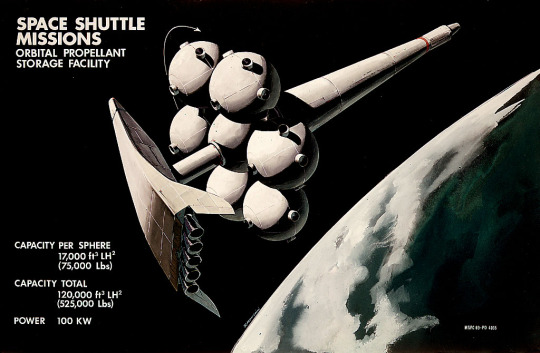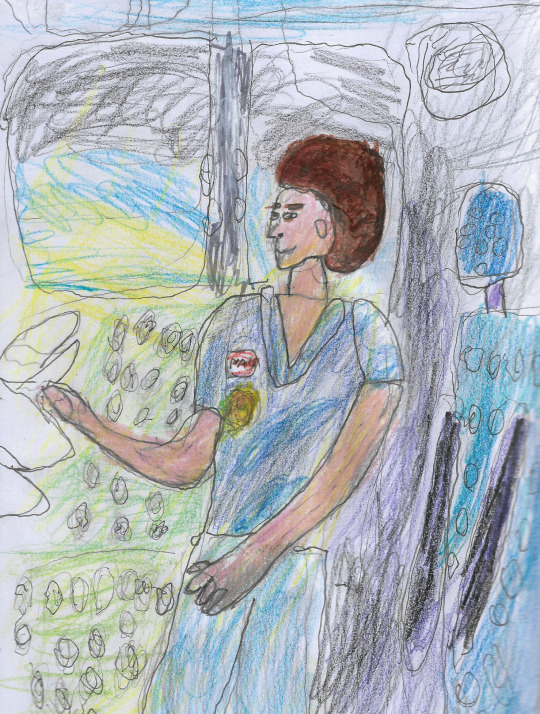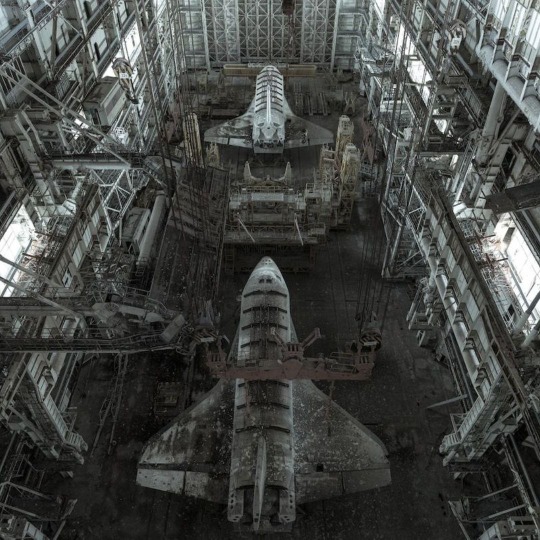#Shuttle Program
Explore tagged Tumblr posts
Text

Today, I had the privilege of meeting astronaut Winston Scott! He flew on two shuttle missions, STS-72 and STS-83, and completed three spacewalks between the two missions. Really nice guy.
30 notes
·
View notes
Text

NASA EVA suit
#nasa photos#nasa science#nasaastronaut#us space program#eva suit#space suit#shuttle program#spacewalk
12 notes
·
View notes
Text

Early Program Development
"As part of the Space Task Group's recommendations for more commonality and integration in America's space program, Marshall Space Flight Center engineers proposed an orbiting propellant storage facility to augment Space Shuttle missions. In this artist's concept from 1969 an early version of the Space Shuttle is shown refueling at the facility."
Date: 1969
NASA ID: MSFC-9902021, MSFC 69-PD 4035
#Space Shuttle#Space Shuttle Development#Concept Art#NASA#Space Transport System Program#Space Transport System#STS#Space Station Concept#Space Station#Space#Earth#1969#Star Clipper#Lockheed Star Clipper#Shuttle Program#Space Shuttle Phase A#Phase A#my post
21 notes
·
View notes
Text

I made this in honor of American Astronaut and Physicist Doctor Sally Ride, who became the first American Woman in Space on June 18, 1983.
This drawing was a blast for me to make of such a remarkable woman, I hope y'all find it's subject as interesting as I do.
youtube
#June 1983#Sally Ride#NASA#Astronaut#Space Art#1983#Scientist#Physicist#Youtube#Tennis#Challenger Space Shuttle#OV-099#Space Shuttle#Shuttle Program#STS 7#Space Shuttle Challenger#1980s#LGBT Scientist#Women in Science#Space Exploration#Traditional Art#Colored Pencils#Color Pencil#Historical Art#Colored Pencil Drawing
1 note
·
View note
Text






Some more crystal clear moon photos! 2500 Megapixel
#moon photography#moon craters#moon landing#full moon#moon#astronomy#nasa#astronomers#universe#nasa photos#astrophotography#astrophysics#outer space#nasawebb#hubble space telescope#international space station#space travel#space science#space exploration#space#astronomy facts#solar system#nasaastronaut#nasa science#nasa jpl#nasa picture of the day#space program#space shuttle#james webb space telescope#planetary science
892 notes
·
View notes
Text

A cutaway diagram of the space shuttle.
1K notes
·
View notes
Text


Space Shuttle Enterprise separates from the Shuttle Carrier Aircraft during its first free-flight of the Approach and Landing Tests. August 12, 1977.
Approach and Landing Test 12 was the first free flight of the Enterprise, crewed by Commander Fred Haise and Pilot C. Gordon Fullerton. The flight lasted just over 5 minutes, with the Shuttle landing at the Rogers Dry Lake just outside of Edwards Air Force Base and NASA's Ames-Dryden Flight Research Center (now named the Armstrong Flight Research Center).

Another view of Enterprise as it separates from the SCA.
Out of sixteen tests during the ALT program, the final five were free-flights. Three of these free-flights included the tailcone, with the last two removing the tailcone and including mock ups of the RS-25 Space Shuttle Main Engine.

Fred Haise and C. Gordan Fullerton pose in front of the prototype Space Shuttle Enterprise outside of Rockwell International's Orbiter Assembly Facility in Palmdale, California. September 1976.
NASA 1, 2, 3, 4
169 notes
·
View notes
Text

91 notes
·
View notes
Text

#youtube#redlettermedia#red letter media#rich evans#jay bauman#gorilla interrupted#half in the bag#mike stoklasa#best of the worst#jack packard#nasa#space#astronaut#astronauts#space program#space ship#space shuttle#space travel#space marines#space exploration#space jam#space art#space science#astronomy#outer space#deep space
18 notes
·
View notes
Text

STS-118 Endeavour Rollout..
#space#space exploration#space shuttle#shuttle#launch pad#engineering#STS#STS-118#Endeavour#rollout#Endeavour Shuttle#Shuttle Endeavour#Space Shuttle Endeavour#OV-105#NASA#Space Shuttle Program
6 notes
·
View notes
Text

STS-132 - Atlantis - EOM: 26 May 2010 - KSC
#Space Shuttle#Atlantis#STS-132#Orbiter#NASA#spacecraft#KSC#Kennedy space center#aerospace#space program
62 notes
·
View notes
Text

So you, too, can enjoy the bizarre menu they served on the shuttle orbital flight tests. Anyone wanna guess what ground beef with pickle sauce tasted like in microgravity?
20 notes
·
View notes
Text

The naming of the space shuttle Enterprise involves one of the funniest presidential orders of all time.
Enterprise, the first space shuttle orbiter, was originally to be named Constitution, in honor of the Constitution of the United States. However, "Star Trek" fans started a write-in campaign urging the White House to instead select the name of the starship that James T. Kirk captained in the original TV series. Although President Gerald Ford did not mention the campaign, he directed NASA officials to change the name, saying he was "partial to the name" Enterprise.
In recognition of their namesake, "Star Trek" creator Gene Roddenberry and most of the principal cast of the original series were on hand when the shuttle Enterprise was rolled out of Rockwell's Air Force Plant 42, Site 1, Palmdale, Calif., assembly facility on Sept. 17, 1976.
Enterprise was built for NASA to perform test flights in the atmosphere; lacking engines or a functional heat shield, it was not capable of actual spaceflight. NASA planned to eventually outfit Enterprise for spaceflight and to make it the second space shuttle to fly, after Columbia, but final design plans for the fuselage and wings of the orbiters changed during the construction of Columbia, and refitting Enterprise in accordance with the new plans would have required significant effort: Entire sections would have to be dismantled and shipped across the country to subcontractors. Instead it was deemed less expensive to build the space shuttle Challenger from existing materials.
And she now resides in New York City at the Intrepid Sea, Air, and Space Museum :)
#and I share a birthday with the first nasa orbiter. sick#nasa#space shuttle#aerospace#space program
10 notes
·
View notes
Text

Rockwell International art of the Space Shuttle Columbia.
source
#Space Shuttle#Space Shuttle Columbia#Columbia#OV-102#Orbiter#Space Shuttle Program#Concept Art#NASA#Space#Earth#artwork#1981#LGBT#rainbow#my post
411 notes
·
View notes
Text


123 notes
·
View notes
Text

Technology has came a long way huh?


🛑More photos will be added to this post
#jupiter planet#planet jupiter#jupiter#astronomy#through the years#nasa#astronomers#universe#nasa photos#astrophotography#astrophysics#outer space#nasawebb#hubble space telescope#space exploration#space#science#space shuttle#international space station#space science#james webb space telescope#space photography#space travel#space program#spaceship#the universe#nasa science#science facts#planetary science#planetary nebula
410 notes
·
View notes